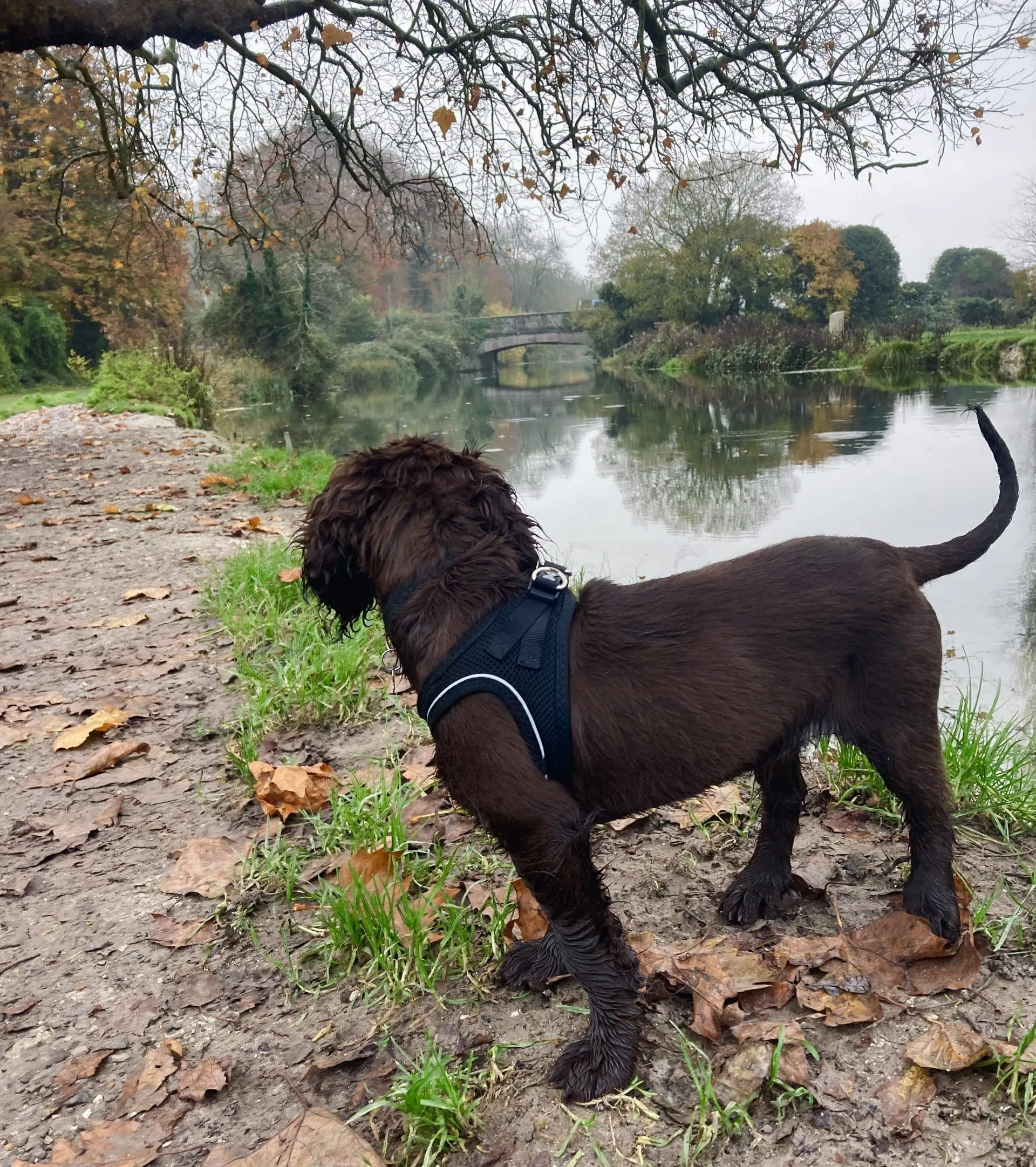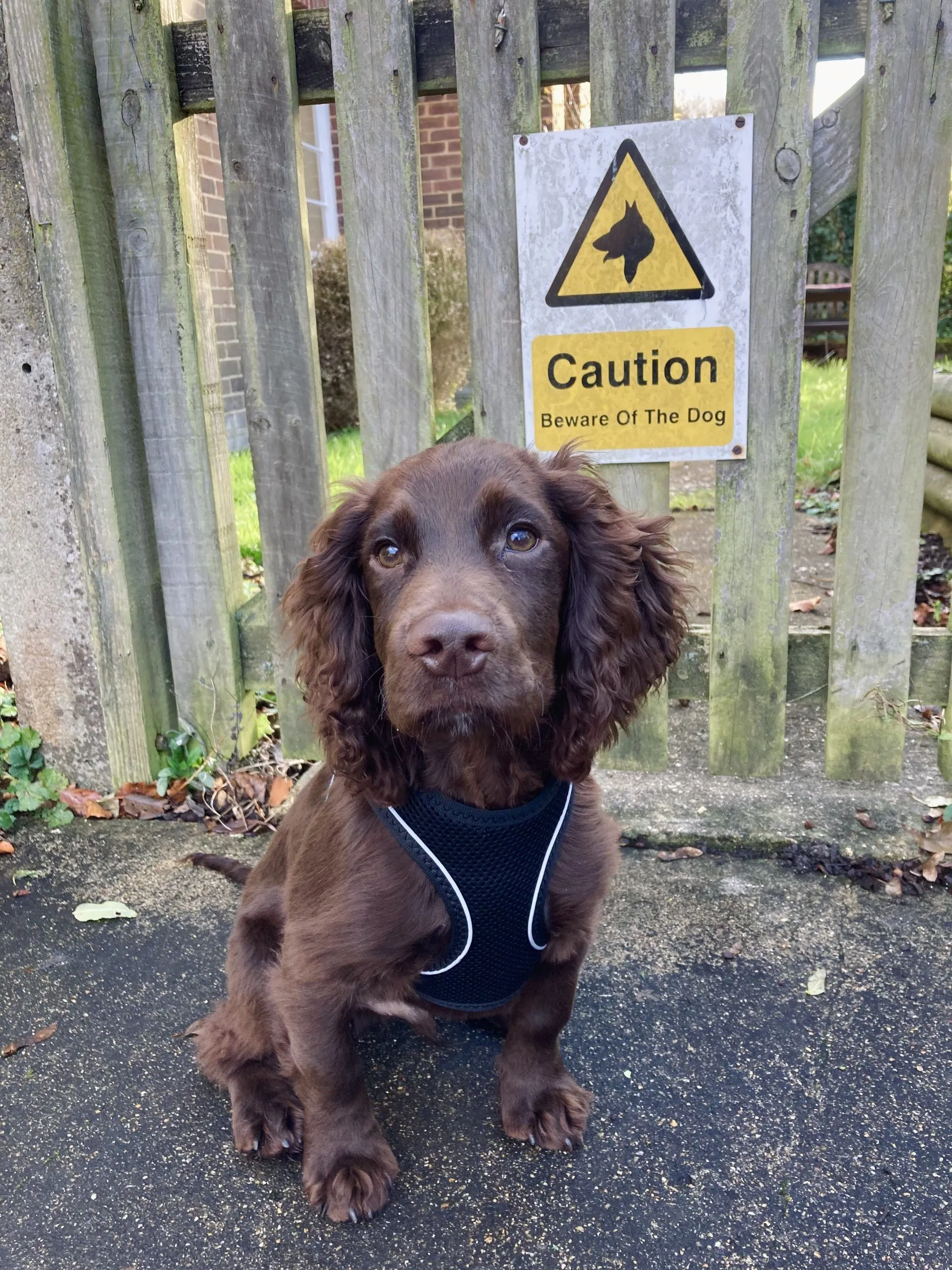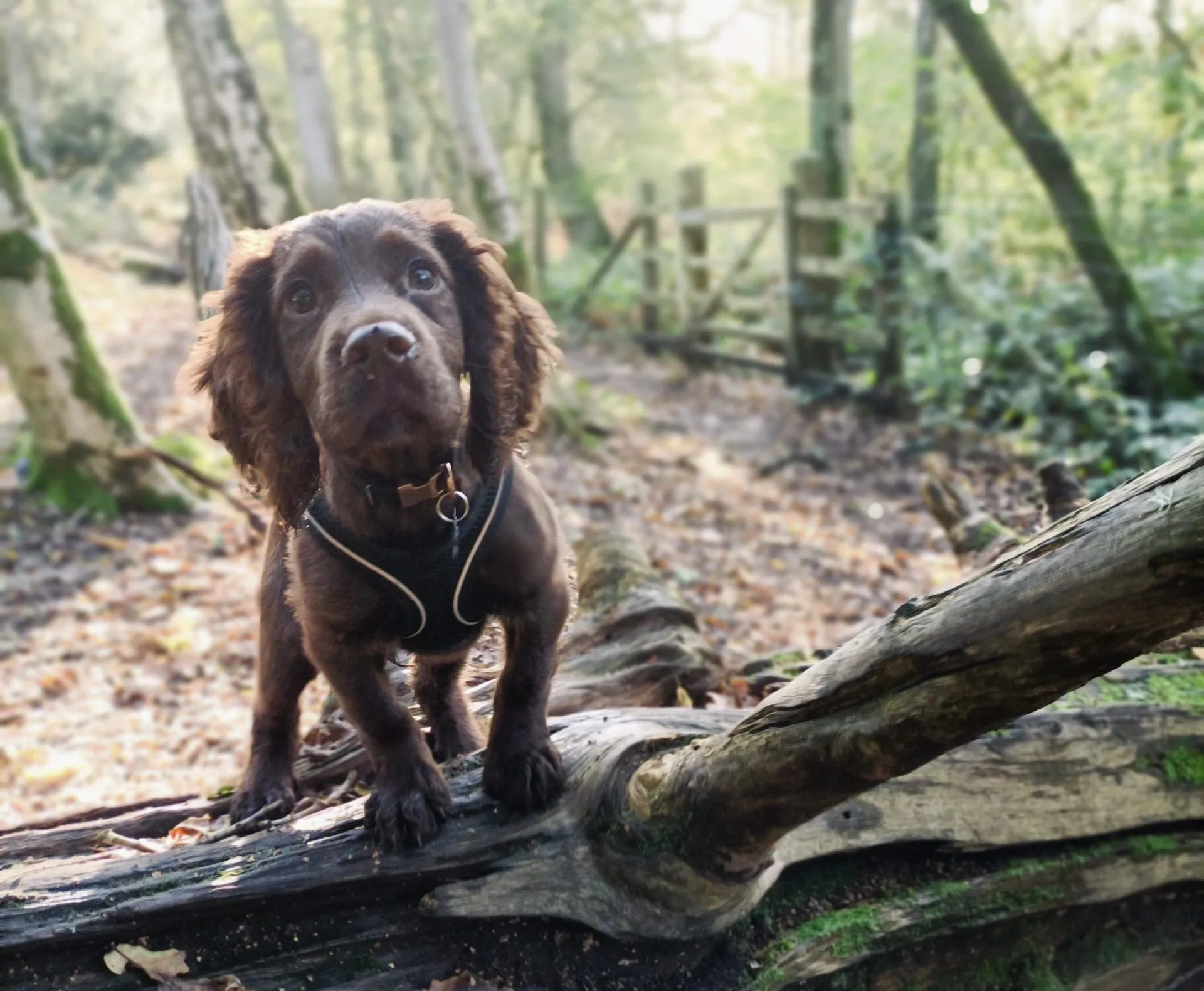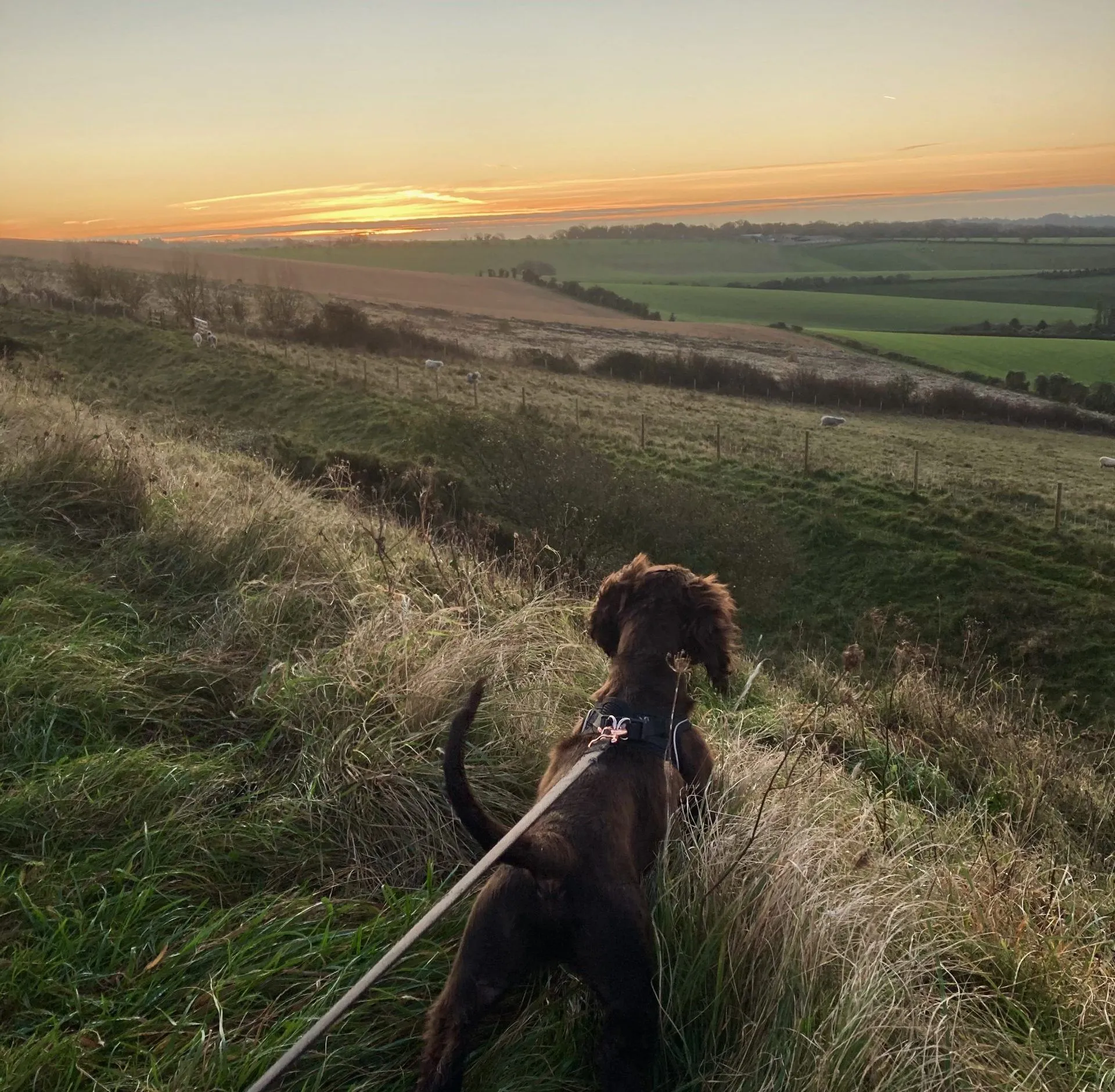Dog walking. It sounds simple, doesn’t it? Clip on the lead, grab the poo bags, and head out the door. Perhaps, like many, you imagine a carefree stroll, your headphones in, while your canine companion trots happily beside you or explores off-lead. For a long time, I shared this idyllic vision, gleaned from childhood memories of our family dogs. But as I’ve come to learn with my own pup, Wilf, there’s a nuanced art to successful dog walking in the UK, especially for those who want to ensure their dog, and others, have the best possible experience. Understanding the intricacies of responsible pet ownership, including when to seek professional advice for vet questions, can make all the difference in your daily walks.
My earliest experiences with dogs were largely observational. Our first dog, Claire, transformed from a chocolate puppy into a well-behaved walker, a process I was too young to fully appreciate. Years later, with our second dog, I still didn’t grasp the finer points of training. It wasn’t until my mother’s third dog, Nala—a spirited pup adopted during the lockdown—that the complexities of canine companionship and outdoor etiquette truly became apparent. Now, with Wilf, I’ve dived headfirst into the realities of dog walking. It’s not just about letting them run; it’s about preparation, awareness, and a keen understanding of canine behaviour.
Beyond the Basics: Understanding Reactive Dogs and Social Etiquette
The world of dog walking is far more complex than simply managing a leash and a few commands. Many factors come into play, from the temperament of your dog to the behaviour of others you encounter. One crucial aspect to consider, particularly when dog walking in the UK, is the presence of reactive dogs. These are dogs that, through past experiences or innate predispositions, may react negatively to other dogs or people. Their owners often invest significant effort in managing their anxieties, and an overly enthusiastic puppy running up to a reactive dog on a lead can quickly escalate into a distressing situation for all involved.
“Don’t worry, he’s friendly!” is a phrase many dog owners utter, often with good intentions. However, these words can be incredibly unhelpful. While your dog might be the friendliest creature on four legs, the other dog might not be. Respecting the space of other dogs and their owners is paramount, especially when you see a dog on a lead. Always make eye contact with the owner and be prepared to recall or manage your own dog before any unwanted interaction occurs.
 Wilf explores the Itchen in a rapidly shrinking harness.
Wilf explores the Itchen in a rapidly shrinking harness.
This understanding extends to the broader social etiquette of dog walking. Another common challenge is dealing with unsolicited judgment from fellow walkers. While a friendly tip can be welcome, leading with “I assume he’s off the lead at this age because…?” accompanied by raised eyebrows, rarely fosters a positive interaction. Every dog and owner journey is unique, and judgment only creates a more stressful environment for everyone. Understanding various cat costs and dog costs is an important part of pet ownership, but often overlooked in daily interactions.
The Art of Off-Lead Training: Timing and Trust
One of the most debated topics among dog owners is when to let a puppy off the lead for the first time. There’s a common misconception that puppies should be kept tethered for an extended period, leading to a stigma around early off-lead training. However, young dogs often possess an inbuilt safety response that keeps them close to their owners, especially during their first few walks. This natural inclination diminishes significantly once a pup passes four months of age. If you wait until they’re older and more independent to introduce off-lead experiences, you might find it considerably harder to establish reliable recall.
The optimal time to let your dog off the lead is when you have absolute confidence in their ability to return when called. For Wilf, I dedicated his pre-vaccination isolation period to rigorous recall training in our garden. By the time he was cleared for outdoor adventures, he had a strong understanding of the ‘here’ command and a whistle cue. This early training meant he stayed close during our initial off-lead excursions, and even now, as a more confident dog, he rarely ventures far without checking in. Witnessing Wilf’s growing confidence and joyous exploration on our walks is truly one of the most rewarding aspects of dog ownership. These moments are so engaging that I often leave my phone at home, finding that nothing keeps you more present than a happy puppy.
 For he is ferocious.
For he is ferocious.
The Unwritten Rules of Responsible Dog Walking in the UK
Beyond the official regulations, there are several “unwritten rules” that foster a harmonious environment for all who share public spaces with their dogs. Adhering to these guidelines not only makes your dog walking experience more enjoyable but also contributes to a positive perception of dog owners within the community.
- Trust Your Recall, Not Pressure: Let your pup off the lead when you are genuinely confident in their ability to return. Don’t feel pressured to keep them on a lead longer than necessary just because of societal norms or the opinions of others.
- Always Scoop the Poop: This should be non-negotiable for anyone involved in dog sitting business or owning a dog. Carry enough poo bags and dispose of them responsibly. If you dislike carrying full bags, plan your route to include plenty of bins. No excuses, ever.
- Appreciate a Puppy’s Age: It’s practically a law among dog enthusiasts to ask a puppy’s age upon meeting them. It’s a delightful conversation starter and a way to share in the joy of new ownership.
- Be Wary of Leashed Dogs: As mentioned, a dog on a lead might be reactive, in training, or simply not want interaction. Always make eye contact with the owner and ensure you can control your dog before they get too close.
- Never Let Your Dog Steal a Ball: This is a cardinal sin of dog walking. Respect other dogs’ toys.
- Assist with Lost Toys: Conversely, if another dog has lost a ball, do all you can to help retrieve it. I once almost fell into the River Itchen saving a tennis ball for a whippet – and it was absolutely worth it.
- Refrain from Judgment: Dogs come in all shapes, sizes, and temperaments, and so do their owners. Unless you witness clear abuse, practice a “live and let live” philosophy. Whether a dog wears a ridiculous waistcoat or its owner waves a stick like a maniac, focus on your own experience.
- Ask Before Petting: Even the most confident pup can be spooked by a stranger lunging down at them. Always ask an owner for permission before attempting to pet their dog, regardless of how much they remind you of your own beloved pet.
- Ask Before Offering Treats: Your salmon fishies might be a delicious treat for your dog, but another dog could have severe allergies. Always ask an owner if it’s okay to offer their dog a treat.
- Embrace Social Interaction: While it’s important to respect personal space, don’t miss out on the rich social fabric of the dog walking community. If your dogs seem to get along, strike up a conversation. Share stories, laugh about training mishaps, and compliment their fluffy companions. Dog owners are often wonderful, down-to-earth people, and you might just make a new friend.
 The perfect perch for the perfect pup.
The perfect perch for the perfect pup.
Preparing for Pet Parenthood: Beyond the Daily Walk
While the daily dog walk is a significant part of pet ownership, it’s just one piece of the puzzle. Being a responsible pet parent also involves understanding the broader commitments, including potential financial aspects. It’s helpful to be aware of things like yearly vet costs for a cat or general animal healthcare expenses, as these can be substantial. Just as you plan for enjoyable walks, you should also plan for the health and well-being of your companion throughout their life. Many new owners are surprised by the cat vet costs per year or equivalent for dogs, highlighting the importance of thorough preparation.
 Something I never thought I would do – an early sunrise walk with Wilf.
Something I never thought I would do – an early sunrise walk with Wilf.
Conclusion: Mindful Dog Walking for a Happier UK Canine Community
Dog walking in the UK is more than just exercise; it’s an opportunity for bonding, exploration, and community engagement. By understanding the nuances of dog behaviour, respecting other walkers and their pets, and adhering to both written and unwritten rules, we can create a more pleasant and safer environment for everyone. From mastering off-lead recall to simply picking up after our pets, every action contributes to our shared spaces. Embrace the journey, enjoy the fresh air, and cherish the moments with your canine companion. Most importantly, always prioritize patience and an open mind, ensuring your walks are a joy for both you and your beloved dog.
